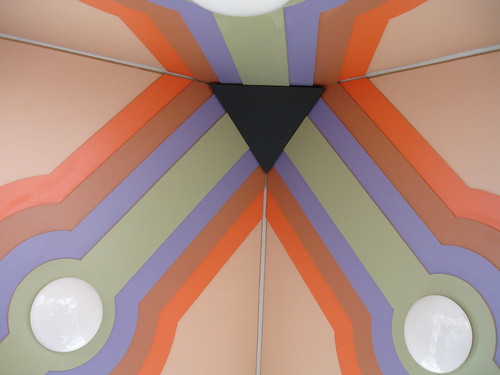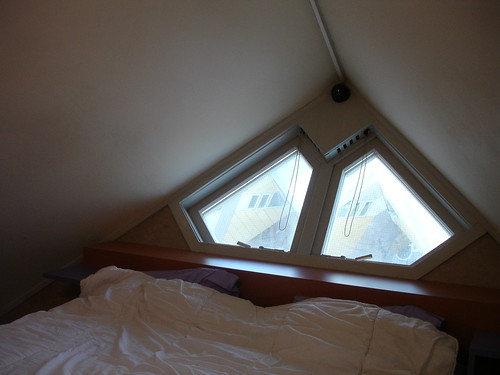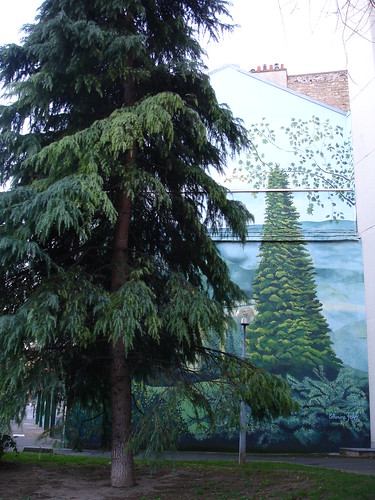We caught the first six hours sitting on the lawn, surrounded by chatty Germans. The pavilion is so pretty at night, look:

Staring at a big screen with Rem and Hans and whoever, and lots of concentrated folk was actually a lot better than being inside. Apparently the cameras got in the way. Pricey too. We enjoyed the inventive cameramen - after 9 it went all glitch:

Anyway, more importantly, what did people say? Everyone mentioned the Middle East in some shape or form. Mostly, vague allusions to pointlessness and Rem saying the world's up in flames.
Brian Eno was talking about making digital music with more than fingers, and slowness in relation to his
77 million paintings (lots of wow and opens September 28th at the Barbican)
Charles Jencks talked about
apocalypse fatigue. Waved about images of the
Herzog and De Meuron Tate building (which later led to a Hadid/Koolhaas quickfire on the stylistic connotations of
inverted pyramids, in passing, just like this). He's better in print though, prone as he seems to rambling speeches on symbols.
Kenneth Adam, set-maker of James Bond films, and Dr Strangelove, talked about making small worlds. Rem told him he has a specific talent for building "places of evil". He has a recurring circular theme that's worth checking.
Lots of tension between Zaha Hadid and Rem Koolhaas we thought (guess they worked together for a while). She didn't make too many coherent points, seemed loath to connect her work/thoughts to a wider context. Did mention an interesting project they had to do at the AA once though: creating abstract lines through the map of London and walking down them in groups, to see how places connect. Of course, this exercise isn't necessary if you actually
know the city you're supposed to be building in, but that's another story.
We heart Tim O'Toole. He's in charge of the London Underground and knows his stuff. After a couple of artists flapping their hands about talking about identity and what not, here's someone who namechecked Brunel. Where is the Brunel of our generation, he asked. Good question. The
Brunel Engine House in Rotherhithe is really worth it by the way. They have mini versions of
Isambard's bridges and stories to tell about the Thames Tunnel when it was a Victorian spectacle with Chinese performers (it's now part of the East London Line).
Ken Loach reckons no one supports him here in the UK. Which makes me wonder: are Parisian kids going to venerate British films like it's the other way round here?
Jude Kelly spouted a lot of nonsense. Really quotable stuff too, for someone in charge of the arts, culture and education for the Olympics (did she mention Hackney though?) Gems like:
there's a big gap between what you say you'll do and what you'll ever do and
we are a nation of mongrels, immigrant after immigrant after immigrant. Not so controversial in retrospect, but I don't think she should be riffing so publicly. Not like I think it's going to work out, but you want her to have some conviction!
Tim Newburn was a practical straight talker, of the kind that made Rem and Hans shh. Professor of criminology and and social policy at LSE, he was the first interviewee to address the audience. He talked about control and CCTV and yeah it's everywhere but he's written
so many books on the topic he has new and unboring things to say about new versions of pluralist social policy transfer.
And at the end of every interview, Hans asked "what is your, dream, for London?" The answers were so bland, I forget.
Labels: architecture




























